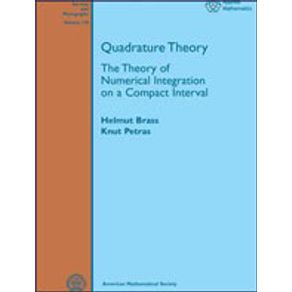Every book on numerical analysis covers methods for the approximate calculation of definite integrals. The authors of this book provide a complementary treatment of the topic by presenting a coherent theory of quadrature methods that encompasses many deep and elegant results as well as a large number of interesting (solved and open) problems.The inclusion of the word "theory" in the title highlights the authors' emphasis on analytical questions, such as the existence and structure of quadrature methods and selection criteria based on strict error bounds for quadrature rules. Systematic analyses of this kind rely on certain properties of the integrand, called "co-observations," which form the central organizing principle for the authors' theory, and distinguish their book from other texts on numerical integration. A wide variety of co-observations are examined, as a detailed understanding of these is useful for solving problems in practical contexts.While 'Quadrature Theory' is often viewed as a branch of numerical analysis, its influence extends much further. It has been the starting point of many far-reaching generalizations in various directions, as well as a testing ground for new ideas and concepts. The material in this book should be accessible to anyone who has taken the standard undergraduate courses in linear algebra, advanced calculus, and real analysis.


